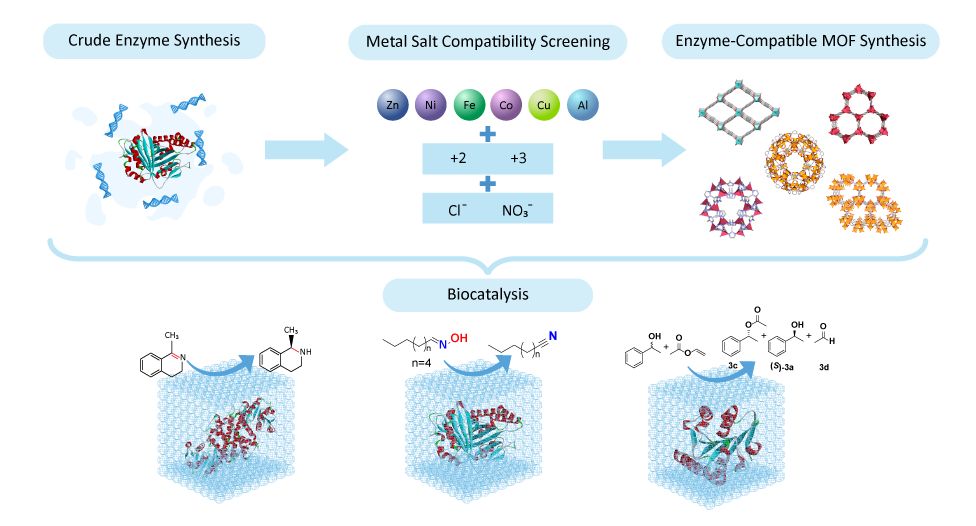Crude Enzyme Extracts for Biocatalyst Entrapment in MOFs
To tackle the enzyme fragility and bolster the applicability of enzymes as heterogeneous catalysts, it is imperative to address not only their inherent fragility, insufficient recyclability but also, importantly, to mitigate their deactivation during purification. Metal-organic frameworks (MOFs) have been shown to be, on the one hand, a promising platform for enzyme entrapment. However, at the same time the existing research on enzyme entrapment in MOFs faces two major limitations: only robust, commercially available enzymes have been employed, and the effect of different metal salts used for MOF synthesis on various enzymes has not been thoroughly considered. To tackle both the fragility of enzymes, their deactivation during purification, and incompatibility with MOF precursors during in situ entrapment, we propose the direct utilization of crude enzyme extracts obtained from cell lysis instead of pure enzymes by entrapping them in MOFs structures, as well as the development of enzyme-compatible MOF syntheses that take into account compatibility of metal salts with enzymes.
In this article:
ACS Nano 2025, 19, 15, 14817–14828. DOI: 10.1021/acsnano.4c18266
we focus on three enzymes with varying sensitivities: aldoxime dehydratase (OxdB), imine reductase (IR-23), and Amano lipase. We evaluate for the first time the effects of different metal sources (Al, Fe, Co, Ni, Cu, Zn), their oxidation state and counterions as well as MOF synthetic parameters on enzyme activity. Based on this, we optimize protocols for MOF entrapment of crude enzymes for Fe-MIL-88A, Fe-MIL-100, Zn-MOF-74, Zn-ZIF-8 and for the first time develop fast aqueous room temperature synthesis of Al-MIL-53. Investigation of the biocatalytic performance of the enzyme@MOF biocomposites suggests that tailor-made MOF entrapment using crude enzyme extracts can effectively maintain enzyme activity and stability in various catalytic reactions, offering a straightforward pathway for industrial applications. All in all, utilizing crude cell extract as an enzyme source could allow to fully harness the potential of MOF entrapment for diverse and industrially relevant enzymatic processes.



